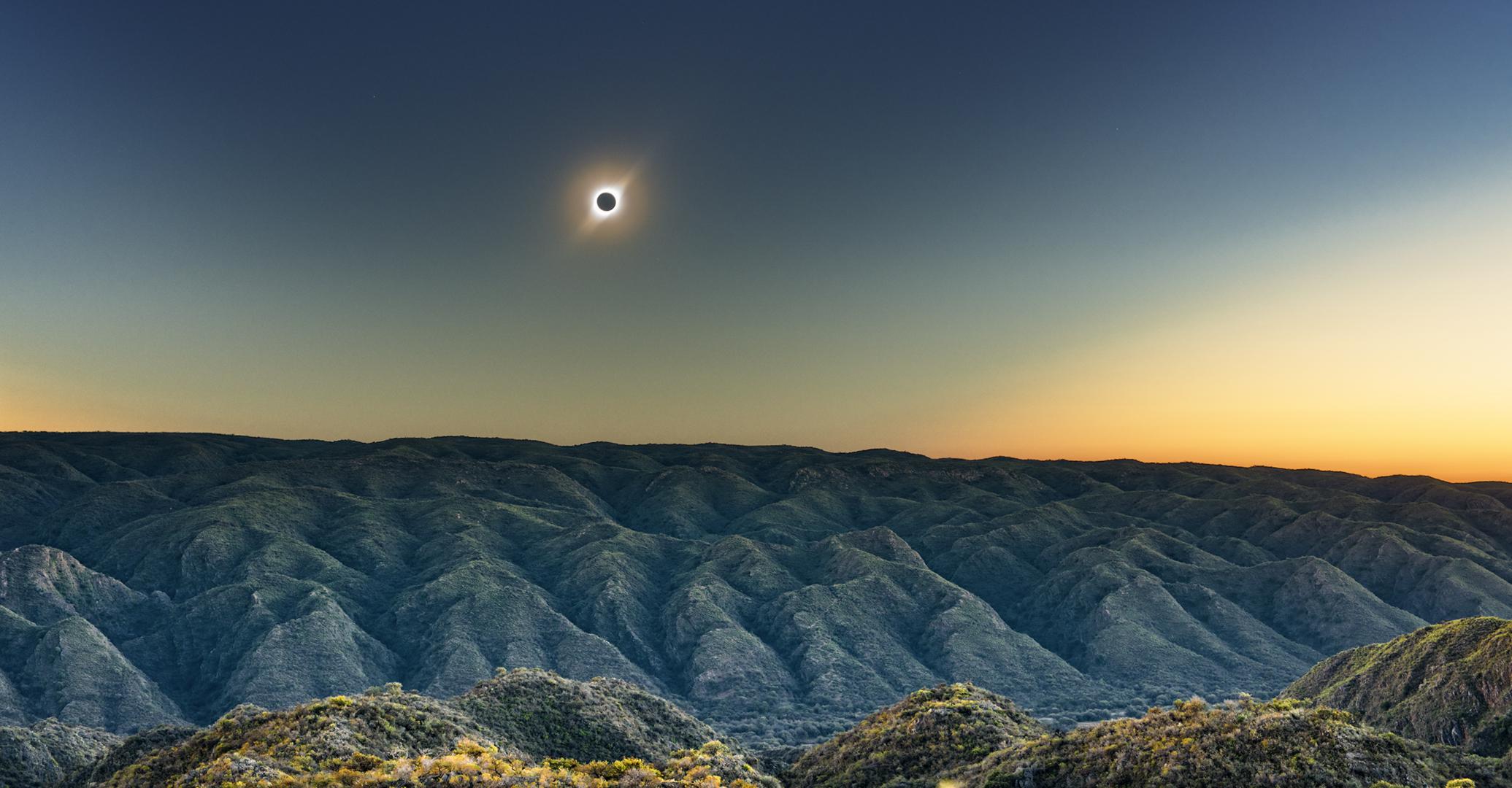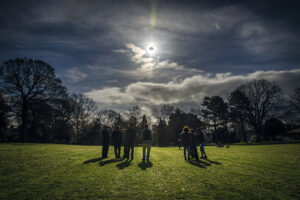Mastering Solar Eclipse Photography: Insights from Alan Dyer

Alan Dyer, a renowned astronomy author and photographer, recently shared invaluable tips with the Hamilton Amateur Astronomers group on the art of photographing a solar eclipse while ensuring you still savor the celestial spectacle. These insights are equally relevant for the upcoming annular solar eclipse set to traverse the Americas on October 14, 2023. As millions gear up to witness these rare events, let’s delve into Dyer’s expert advice on eclipse photography.

Photographing a Solar Eclipse: A Five-Tiered Approach
Total solar eclipses are fleeting phenomena, offering only a brief window to capture their majesty. Alan Dyer acknowledges that deciding to photograph an eclipse involves a careful consideration of effort and the potential stress it may entail.
For him, personally, the 2024 total eclipse will be an opportunity to snap a few amateurish shots using his smartphone, recognizing that the results may not match the mastery of astrophotographers. Dyer recommends five progressively challenging levels for photographing a solar eclipse:
Phone Camera Photography of a Solar Eclipse
Dyer’s first level is accessible to anyone with a smartphone. Using your phone’s camera, set it to a wide-angle lens view to capture both the landscape and the sun simultaneously. Alternatively, zoom in for a closeup of the sun during totality. For optimal results, mount your phone on a tripod and engage time-lapse mode. Consider recording a 4K video that not only captures the eclipse but also preserves your expressions of awe and wonder throughout the event. Begin recording a minute or two before totality to ensure an uninterrupted viewing experience.
Wide-Angle Time-Lapse Photography
The second level involves using a camera with a wide-angle lens set up on a tripod. Set the camera to auto-exposure and manually focus the lens to infinity. Start capturing images before totality and let the camera do the work, taking hundreds of images while you relish the live view. Depending on your lens size, you may be able to include the surrounding landscape in your photographs.
Extensive planning and framing in advance, possibly using planetarium software with field-of-view indicators, can help you achieve the desired composition. Technical considerations include setting exposure with wide area sampling, exposure compensation to -1 EV, and using an intervalometer with a 1-second interval.
Telephoto Videos
For those seeking to capture the eclipse through a telephoto lens, Dyer suggests using a 300mm to 500mm lens on a stable tripod. Employ an approved solar filter for the partial phases and practice capturing solar images before the eclipse day.
Ensure the lens is properly focused a couple of minutes before totality. About a minute before totality, remove the solar filter when you are no longer peering through the lens. Keep in mind the potential risk of blindness when viewing the sun through a camera. Autofocus simplifies the process, allowing the sun to drift through the frame. Additional recommendations include using a wide-open lens aperture, a low ISO setting, and a sturdy tripod and head.
Telephoto Stills
For close-up still images of the eclipse, Dyer advises using a telephoto lens on a camera with a tripod or a compact telescope. Exposure length varies according to your desired outcome. A one-second exposure captures the delicate corona and earthshine, while a 1/1000 exposure accentuates the dazzling diamond ring effect.
Capture the largest RAW images possible, use live view on your DSLR camera, and consider employing an electrical 1st-curtain shutter for mirrorless cameras. Auto-exposure bracketing streamlines the process by capturing a range of exposures with a single click.
Telescope on a Tracking Mount
The most advanced level involves using a telescope mounted on a tracking system to photograph the eclipse. Prior experience with your telescope and mount is essential, including practice sessions for photography. To achieve extreme close-up views of the eclipse without blurring, your setup must track both the sun and the moon meticulously.
Photographing a solar eclipse demands meticulous planning, equipment preparation, and the selection of an approach that suits your expertise and objectives. Whether you opt for smartphone snapshots or embark on a high-level astrophotographic journey, the 2024 total solar eclipse promises to be a remarkable celestial event to remember.